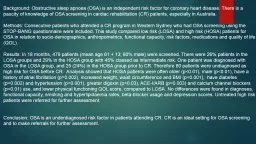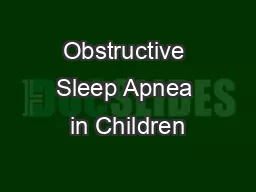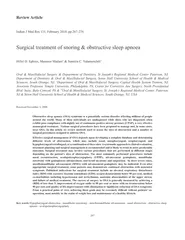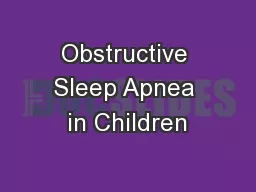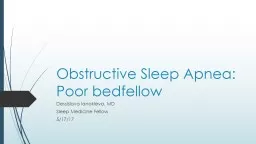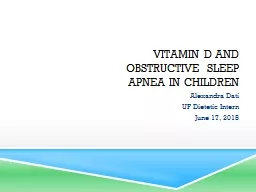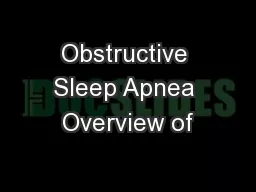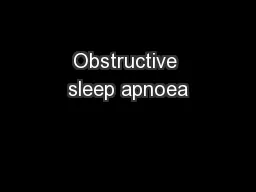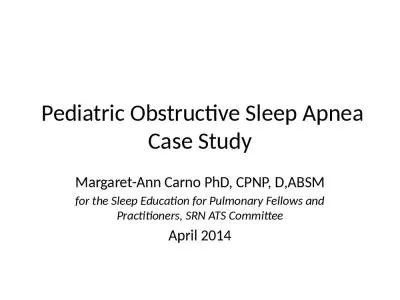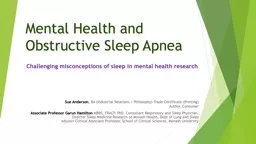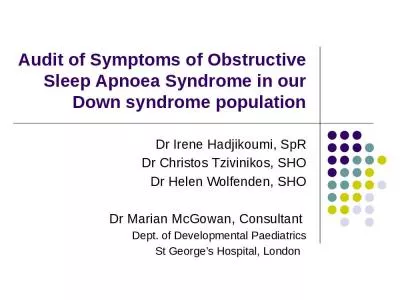PPT-Screening for Obstructive Sleep Apnoea in Cardiac Rehabilitation – A Single Site Experience.
Author : calandra-battersby | Published Date : 2019-03-02
Robert Zecchin Justine Thelander Julie Hungerford Gail Lindsay Jan Baihn Yeng Chai Inga Saliba A Robert Denniss Westmead Hospital NSW Australia Background Obstructive
Presentation Embed Code
Download Presentation
Download Presentation The PPT/PDF document "Screening for Obstructive Sleep Apnoea i..." is the property of its rightful owner. Permission is granted to download and print the materials on this website for personal, non-commercial use only, and to display it on your personal computer provided you do not modify the materials and that you retain all copyright notices contained in the materials. By downloading content from our website, you accept the terms of this agreement.
Screening for Obstructive Sleep Apnoea in Cardiac Rehabilitation – A Single Site Experience.: Transcript
Download Rules Of Document
"Screening for Obstructive Sleep Apnoea in Cardiac Rehabilitation – A Single Site Experience."The content belongs to its owner. You may download and print it for personal use, without modification, and keep all copyright notices. By downloading, you agree to these terms.
Related Documents

